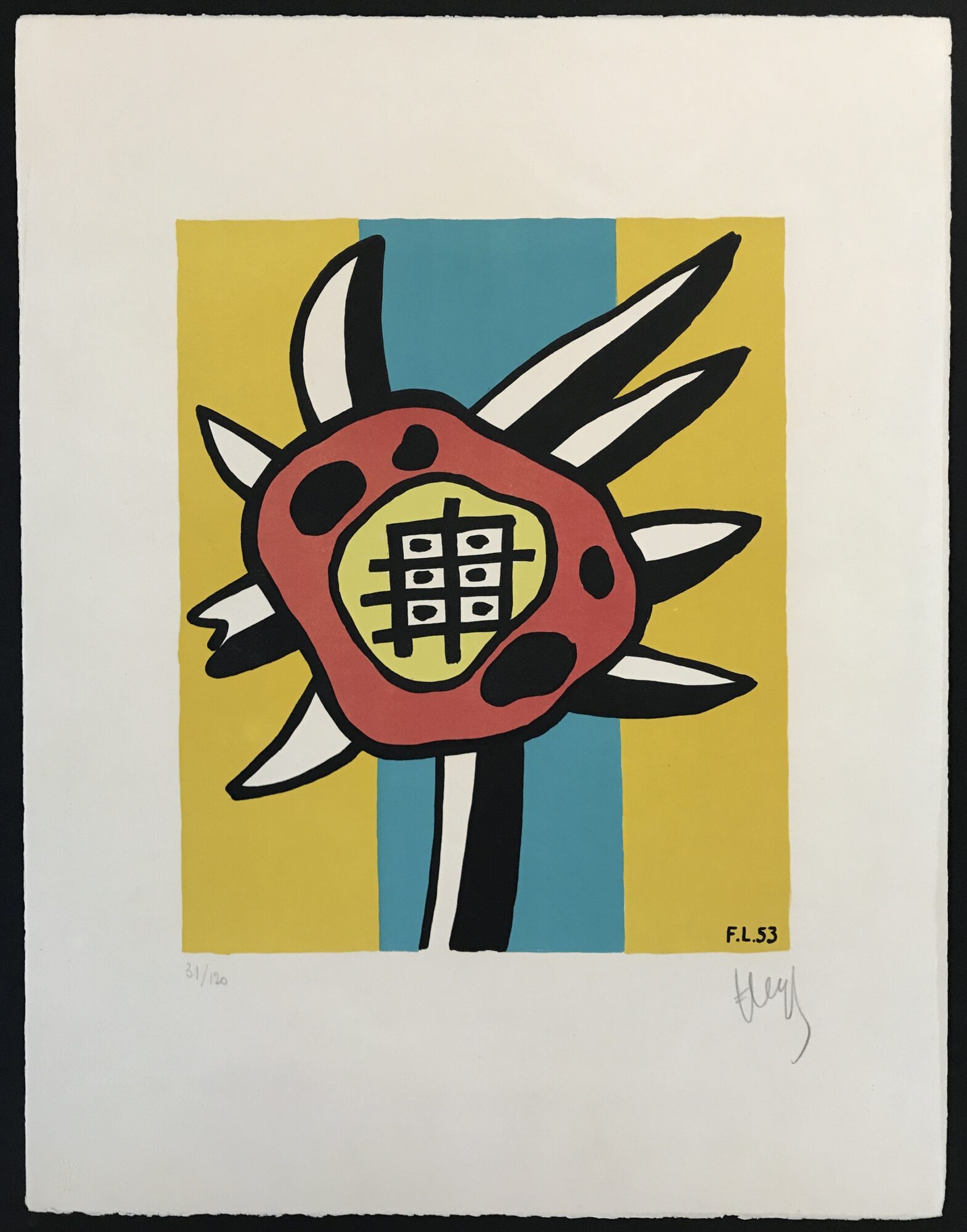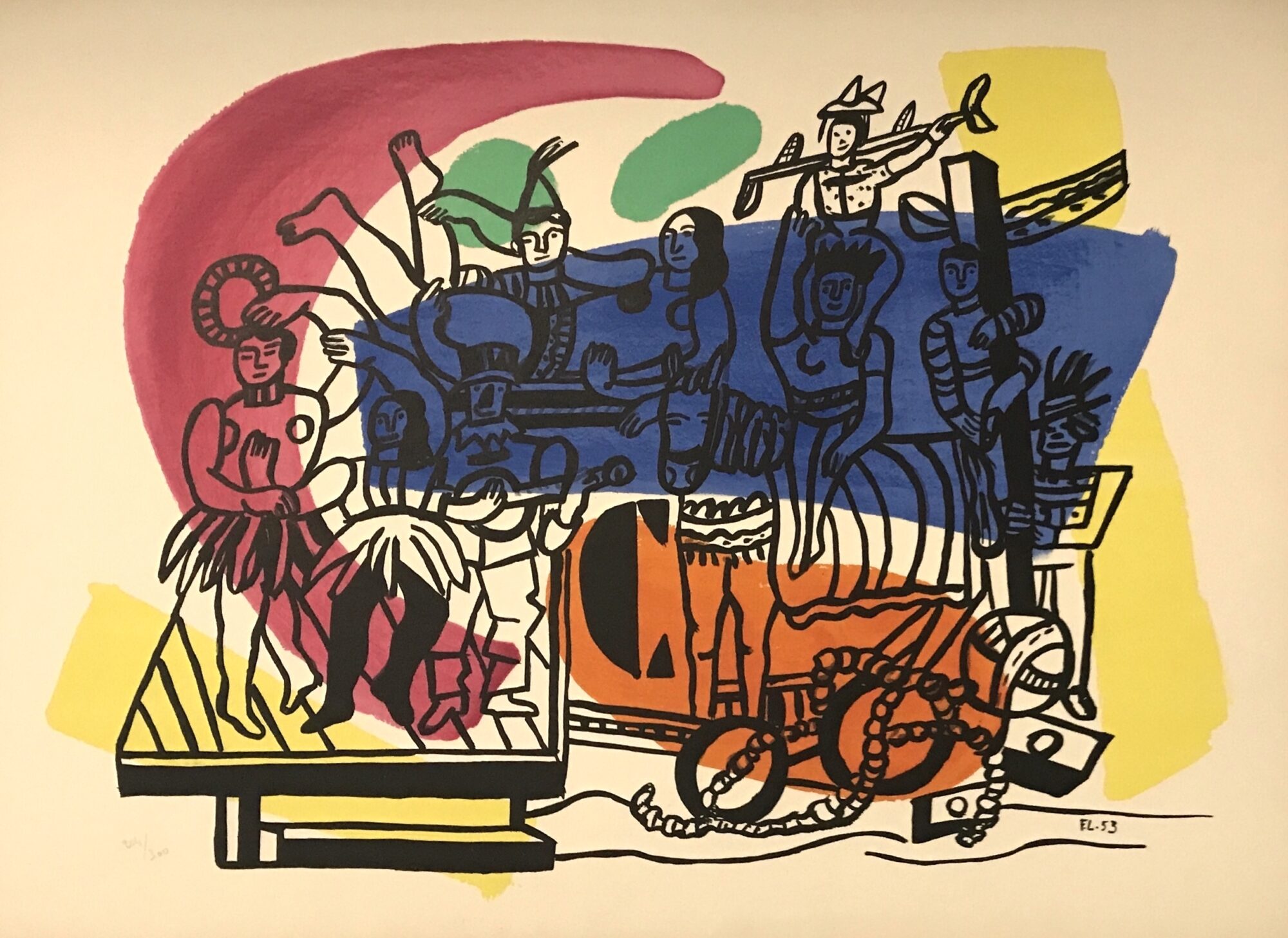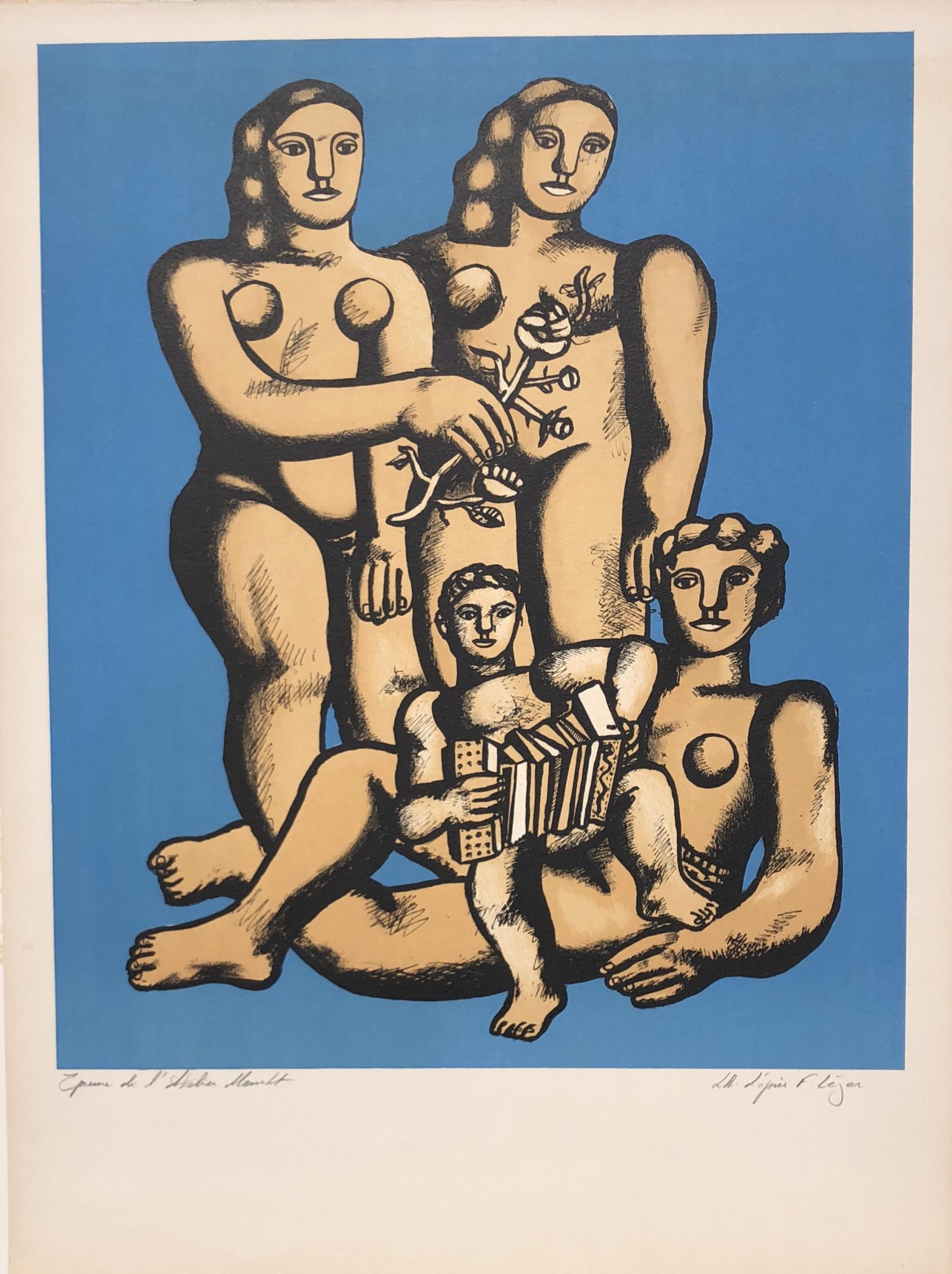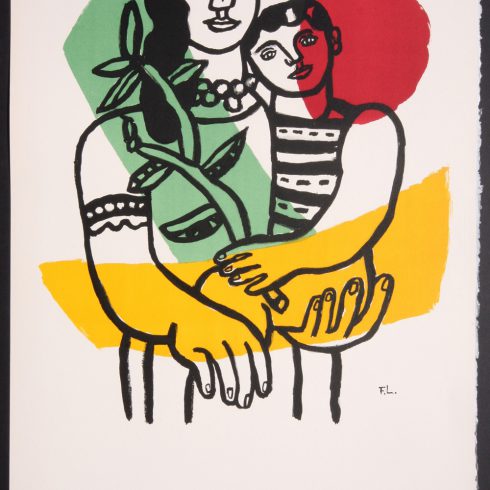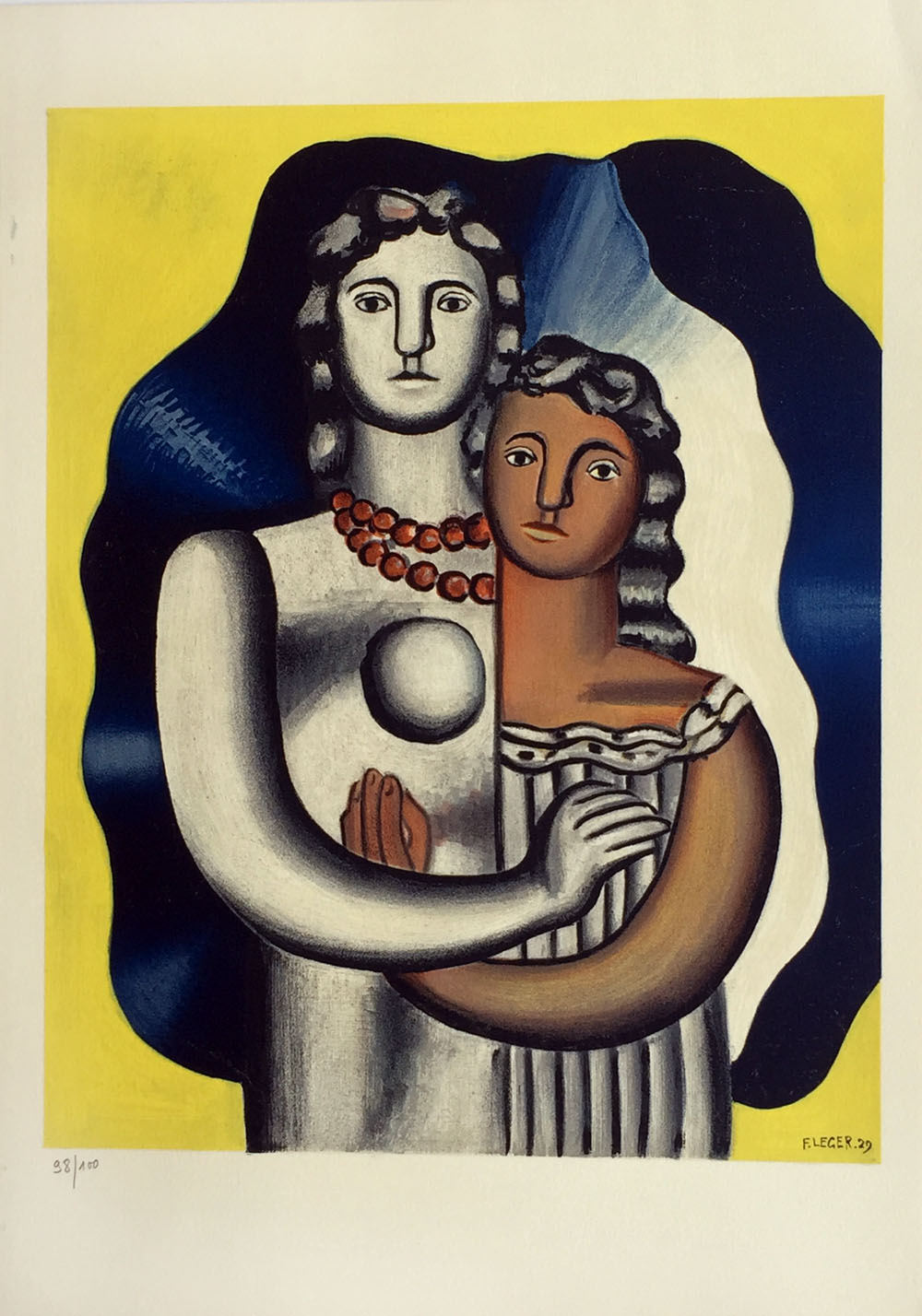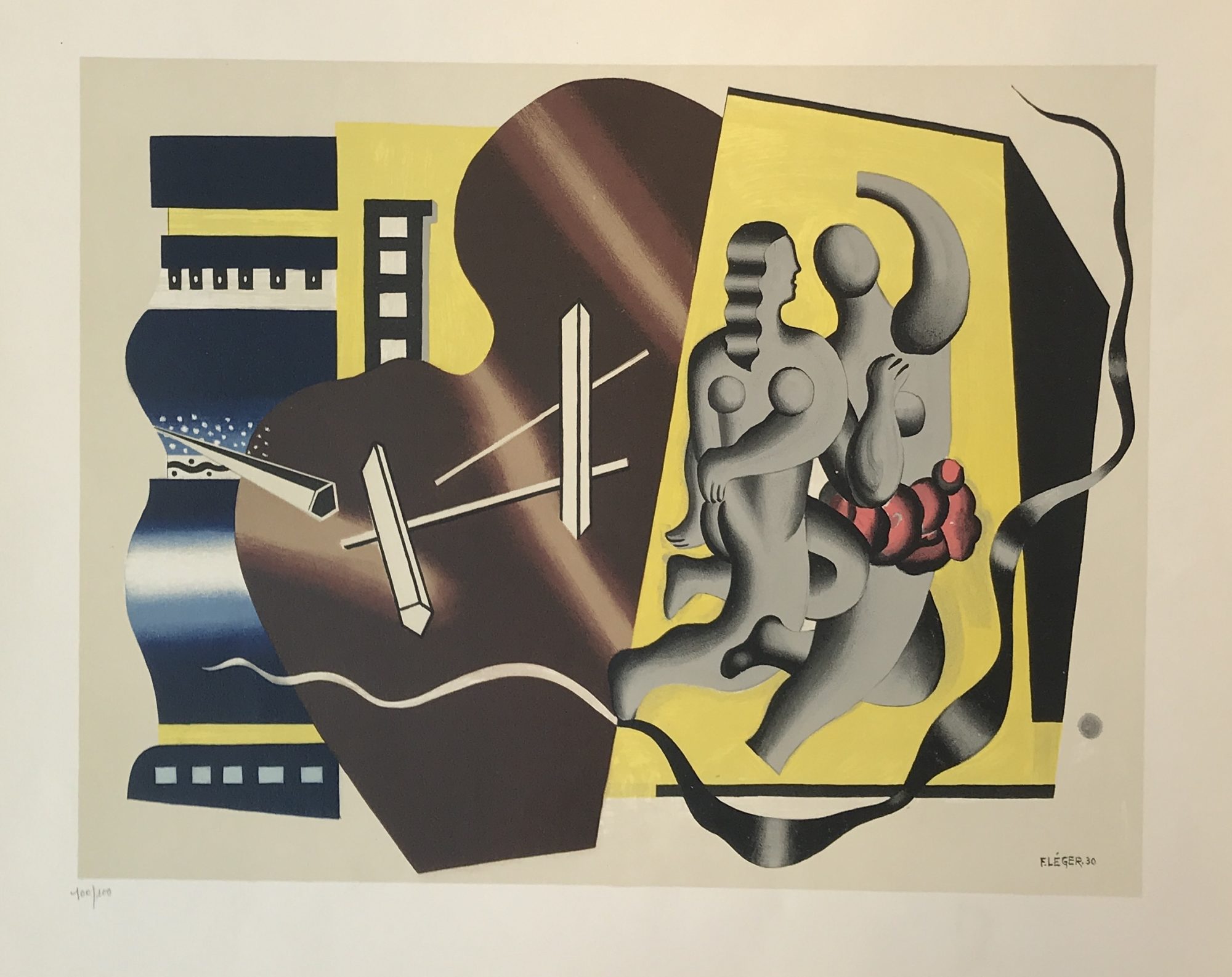Fernand Leger – Le Tournesol
Fernand Leger, Le Tournesol 1953 is an original Lithograph print in colors on Arches paper. This print features a beautiful Sunflower and is pencil signed from the numbered edition of 120. Published and Printed by Guilde de la Gravure, Pully-Lausanne and Mourlot, Paris. Saphire 132.
Fernand Léger was born in rural Normandy on February 4, 1881 and raised by his family to take up a valuable trade, like his father who was a cattle dealer. While Léger was not encouraged to become an artist, when he showed talent for drawing, he was sent to apprentice with an architect in Caen. After finishing his military training in 1903, he studied in Paris at the Ecole des Arts Décoratifs and Académie Julian. During his studies, he made a living doing architectural drawings and retouching photographs. His paintings during this early period show influence from Impressionism, but the 1907 retrospective of Paul Cézanne at the Salon d’Automne changed the direction of his art.
Sunflowers have also been used by countless artists. The most well-known portrayal of sunflowers is Van Gogh’s Sunflower series, which includes Vase With Twelve Sunflowers, Two Cut Sunflowers, and Four Cut Sunflowers. Ai WeiWei was also inspired by the flowers in his Sunflower Seeds exhibit, an installation of millions of porcelain seeds handcrafted by specialists working in small-scale workshops in China, symbolizing the relationship between the individual and the masses.
Authors and other influential figures have used sunflower symbolism to inspire them too, causing them to write encouraging words like:
- Keep your face to the sunshine and you cannot see the shadows. It’s what the sunflowers do. – Helen Keller
- Every friend is to the other a sun, and a sunflower also. He attracts and follows. – Jean Paul
- Light-enchanted sunflower, thou/ Who gazest ever true and tender/ On the sun’s revolving splendour. – Pedro Calderon de la Barca
| Title | Le Tournesol |
|---|---|
| Alt. Title | The Sunflower |
| Medium | Lithograph |
| Year | 1953 |
| Edition | 120 |
| Catalogue Raisonné | Saphire 132 |
| Signature | Signed |
| Size | 25.5 x 19.75 (in) 65 x 50 (cm) |
| Price | Price on Request |
Description
Fernand Leger, Le Tournesol 1953 is an original Lithograph print in colors on Arches paper. This print features a beautiful Sunflower and is pencil signed from the numbered edition of 120. Published and Printed by Guilde de la Gravure, Pully-Lausanne and Mourlot, Paris. Saphire 132.
Fernand Léger was born in rural Normandy on February 4, 1881 and raised by his family to take up a valuable trade, like his father who was a cattle dealer. While Léger was not encouraged to become an artist, when he showed talent for drawing, he was sent to apprentice with an architect in Caen. After finishing his military training in 1903, he studied in Paris at the Ecole des Arts Décoratifs and Académie Julian. During his studies, he made a living doing architectural drawings and retouching photographs. His paintings during this early period show influence from Impressionism, but the 1907 retrospective of Paul Cézanne at the Salon d’Automne changed the direction of his art.
Sunflowers have also been used by countless artists. The most well-known portrayal of sunflowers is Van Gogh’s Sunflower series, which includes Vase With Twelve Sunflowers, Two Cut Sunflowers, and Four Cut Sunflowers. Ai WeiWei was also inspired by the flowers in his Sunflower Seeds exhibit, an installation of millions of porcelain seeds handcrafted by specialists working in small-scale workshops in China, symbolizing the relationship between the individual and the masses.
Authors and other influential figures have used sunflower symbolism to inspire them too, causing them to write encouraging words like:
- Keep your face to the sunshine and you cannot see the shadows. It’s what the sunflowers do. – Helen Keller
- Every friend is to the other a sun, and a sunflower also. He attracts and follows. – Jean Paul
- Light-enchanted sunflower, thou/ Who gazest ever true and tender/ On the sun’s revolving splendour. – Pedro Calderon de la Barca
Additional information
| Title | Le Tournesol |
|---|---|
| Alt. Title | The Sunflower |
| Medium | Lithograph |
| Year | 1953 |
| Edition | 120 |
| Catalogue Raisonné | Saphire 132 |
| Signature | Signed |
| Size | 25.5 x 19.75 (in) 65 x 50 (cm) |
| Price | Price on Request |


